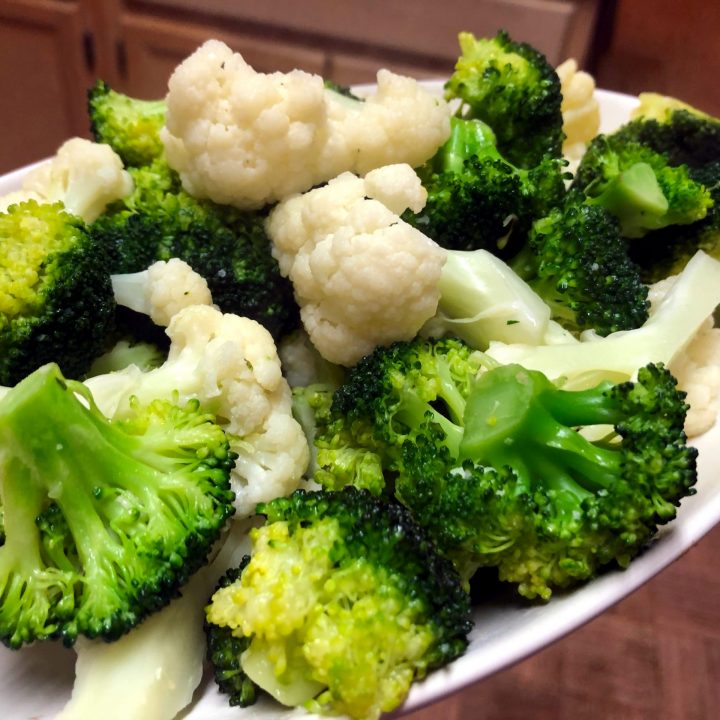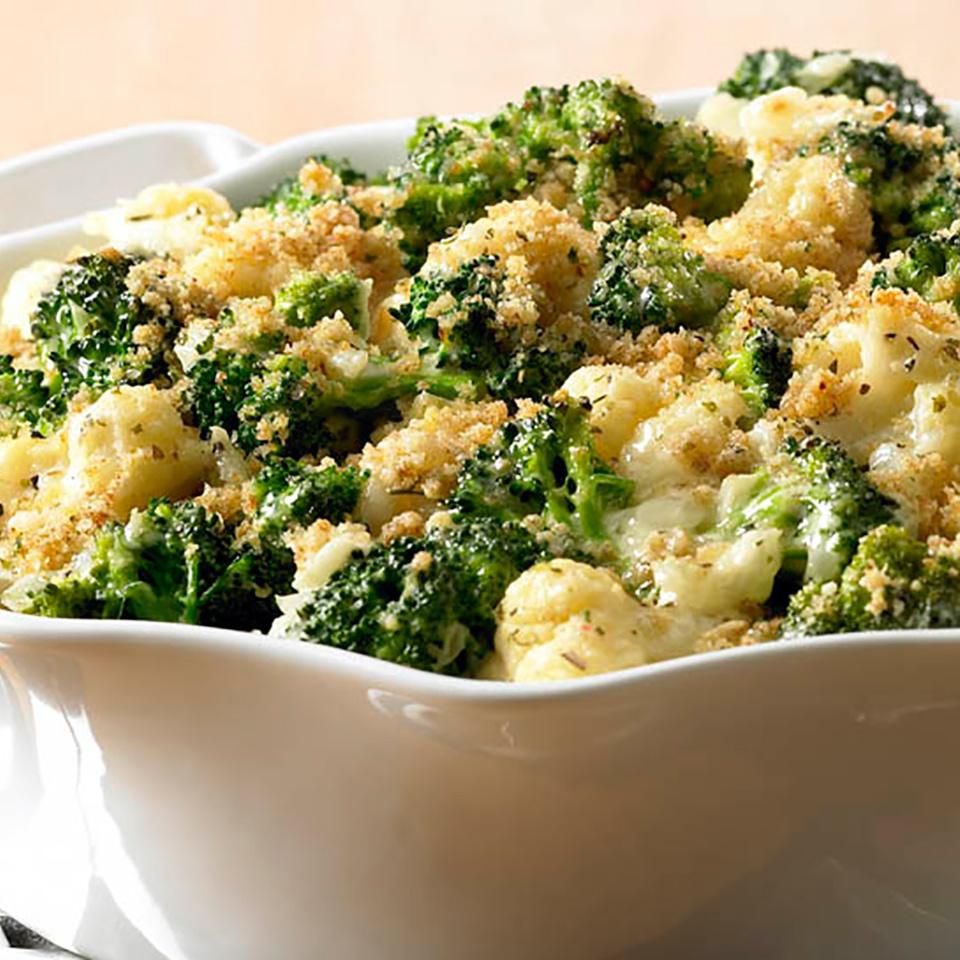How To Cook Broccoli And Cauliflower On The Stove
I. Introduction

A. The Versatility of Broccoli and Cauliflower
Broccoli and cauliflower are two incredibly versatile and nutritious vegetables that can be prepared in a variety of ways. Packed with vitamins, minerals, and fiber, these cruciferous vegetables not only offer numerous health benefits but also boast a delicious flavor and hearty texture. From sautéing to steaming, these vegetables can be transformed into delightful dishes that are suitable for any meal. Their ability to absorb flavors and complement a wide range of seasonings and spices makes them a staple in many cuisines around the world.
B. Cooking Techniques on the Stovetop
When it comes to preparing broccoli and cauliflower, the stovetop offers a convenient and efficient method for cooking these vegetables. With the right techniques and flavor combinations, the stovetop can be used to create mouthwatering dishes that preserve the natural goodness and texture of these vegetables. Whether it’s quick sautéing, gentle steaming, or blanching for ultimate freshness, the stovetop provides a myriad of options for bringing out the best in broccoli and cauliflower.
II. Preparing the Vegetables
A. Washing and Chopping
Before embarking on the culinary journey of cooking broccoli and cauliflower on the stovetop, it is crucial to start with properly preparing the vegetables. One of the initial steps involves washing and chopping the broccoli and cauliflower.
Begin by washing the broccoli and cauliflower under cool, running water. This is essential to remove any dirt, debris, or residual pesticides. The vegetables should be handled with care to ensure that every crevice is thoroughly rinsed. Once cleaned, pat the vegetables dry with a clean kitchen towel or paper towel.
After washing, it’s time to proceed with chopping the vegetables into manageable florets. Start by separating the broccoli and cauliflower into florets using a sharp knife. Be sure to trim off any large, tough stems, keeping the florets relatively uniform in size to ensure even cooking. Discard any discolored or overly fibrous parts. The goal is to create bite-sized florets that are perfect for cooking on the stovetop.
B. Blanching for Best Results

In the culinary world, blanching is a key technique that can elevate the quality and appearance of vegetables, including broccoli and cauliflower. The process of blanching involves briefly immersing the vegetables in boiling water, then quickly transferring them to an ice water bath to halt the cooking process. This technique not only helps to preserve the vibrant color of the vegetables but also softens their texture while retaining a pleasant crunch.
To blanch broccoli and cauliflower, start by bringing a pot of water to a rolling boil. It’s important to have a large pot of water to ensure the vegetables have enough space to cook evenly. Once the water reaches the boiling point, carefully add the prepared broccoli and cauliflower florets to the pot. Allow the vegetables to blanch for just a few minutes – typically around 2 to 3 minutes – until they become vibrant and just tender.
After blanching, immediately transfer the vegetables to a bowl of ice water using a slotted spoon or tongs. The ice water bath rapidly cools down the vegetables and arrests the cooking process, preserving their bright color and crunch. Once cooled, drain the broccoli and cauliflower thoroughly before proceeding with your chosen stovetop cooking method.
III. Sautéed Broccoli and Cauliflower
A. Heating the Pan
Sautéing broccoli and cauliflower on the stovetop is a quick and flavorful way to prepare these vegetables. To start, select a sturdy, wide-bottomed pan that can accommodate all the vegetables in a single layer. Heat the pan over medium-high heat and add a small amount of oil—olive oil, avocado oil, or another high-heat oil is recommended for sautéing. Allow the oil to heat until it shimmers, indicating that the pan is hot enough for the vegetables to sizzle upon contact.
B. Adding Flavorful Ingredients
Once the pan is adequately heated, carefully add the prepared broccoli and cauliflower florets. It’s crucial not to overcrowd the pan, as this can lead to steaming rather than sautéing, resulting in limp vegetables. Keep the vegetables in a single layer to ensure even cooking. As the vegetables begin to sauté, you can add a touch of salt and pepper for seasoning, along with other aromatics such as minced garlic, red pepper flakes, or freshly grated ginger to infuse the vegetables with additional flavor.
IV. Steamed Broccoli and Cauliflower

A. Setting Up the Steaming Process
Steaming broccoli and cauliflower on the stovetop is a gentle and healthful cooking method that retains the vegetables’ natural color, nutrients, and texture. To steam the vegetables, fill the bottom of a pot with a small amount of water and place a steamer basket or insert inside. Bring the water to a simmer over medium heat. Once the water is simmering, add the prepared broccoli and cauliflower florets to the steamer basket. Cover the pot with a lid to trap the steam and cook the vegetables for a few minutes until they are tender but still crisp.
B. Seasoning and Serving
After steaming, the broccoli and cauliflower are ready to be seasoned and served. Remove the vegetables from the steamer basket and transfer them to a serving dish. Season the steamed vegetables with a sprinkle of salt, a drizzle of extra virgin olive oil, and a squeeze of fresh lemon juice for a burst of brightness. Alternatively, you can add a dash of your favorite herbs or a sprinkle of grated Parmesan cheese to enhance the flavors. Steamed broccoli and cauliflower make a delightful side dish or a nutritious addition to salads, grain bowls, or stir-fries.
V. Stir-Fried Broccoli and Cauliflower
A. Achieving the Perfect Tenderness
Stir-frying broccoli and cauliflower on the stovetop is a fantastic way to infuse these vegetables with flavor while maintaining a delightful crunch. To achieve the perfect tenderness, start by heating a wok or a large skillet over high heat. Add a high-heat oil, such as peanut oil or sesame oil, and allow it to heat until it shimmers. Once the oil is hot, carefully add the prepared broccoli and cauliflower florets to the pan. Toss the vegetables frequently to ensure they cook evenly and achieve a tender yet crisp texture.
Stir-frying allows for quick cooking at high heat, resulting in beautifully caramelized edges while preserving the vegetables’ natural vibrancy and crunch. The goal is to strike a balance where the vegetables are cooked through but still retain a pleasing bite. This method not only brings out the natural sweetness of the vegetables but also creates a delightful textural contrast that adds depth to the dish.
B. Enhancing with Savory Sauces
To elevate stir-fried broccoli and cauliflower, consider enhancing the dish with savory sauces and seasonings. Once the vegetables are almost tender, you can add a splash of soy sauce, oyster sauce, or a drizzle of teriyaki sauce to infuse them with umami-rich flavors. Optionally, you can incorporate aromatics such as minced garlic, ginger, or shallots to impart additional depth to the dish. Toss the vegetables with the sauces and seasonings, ensuring they are evenly coated, and continue stir-frying until the flavors meld together, and the vegetables reach the desired tenderness.
For a touch of heat and complexity, you can also include a sprinkle of red pepper flakes, a dab of chili paste, or a splash of rice vinegar to brighten the flavors. These savory sauces and seasonings add depth and complexity to the stir-fried broccoli and cauliflower, transforming them into a delectable and aromatic dish. Whether served as a standalone side or as a flavorful addition to stir-fries or rice bowls, stir-fried broccoli and cauliflower offer a delightful culinary experience.
